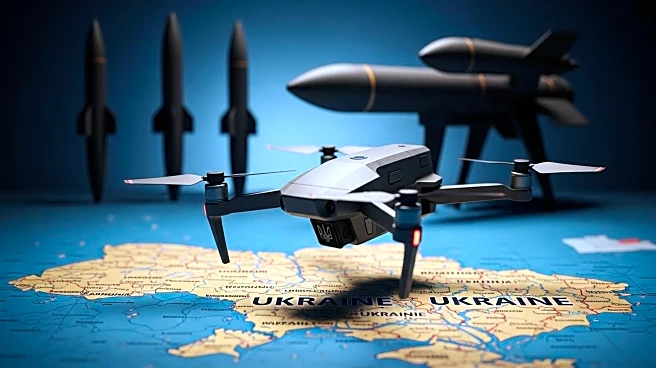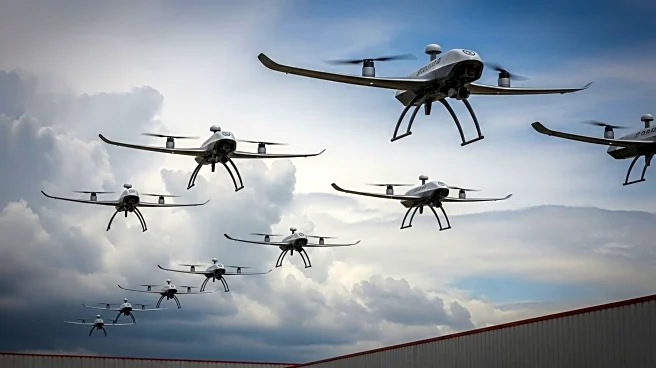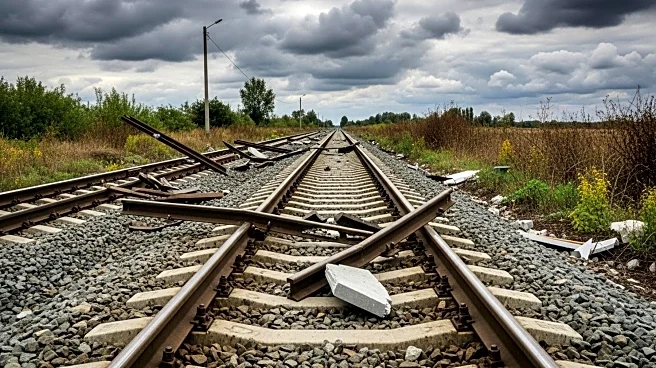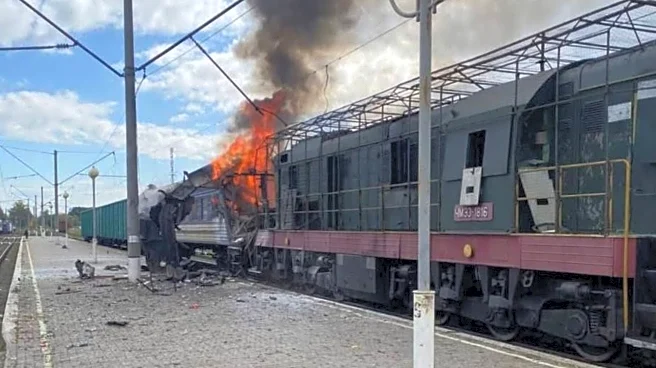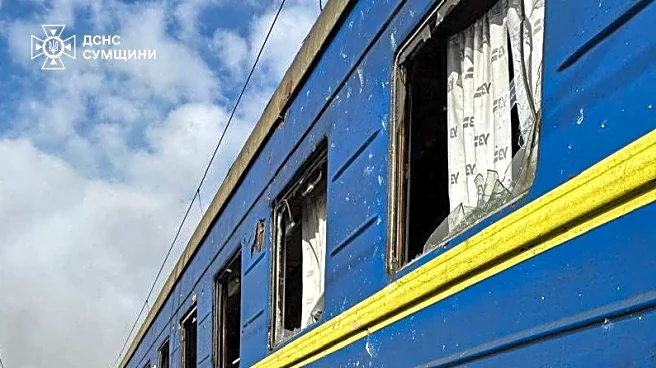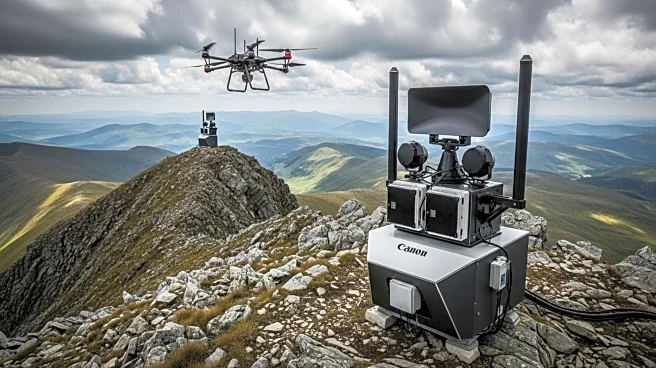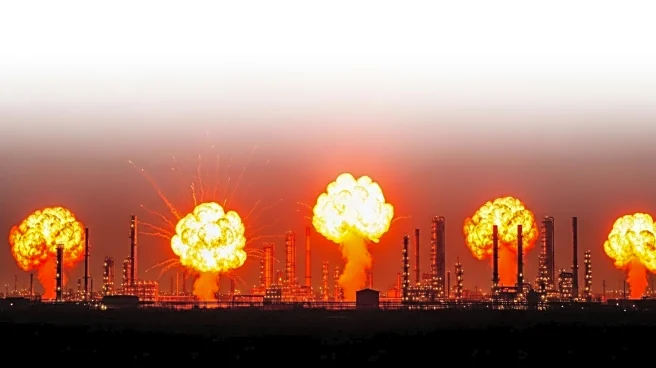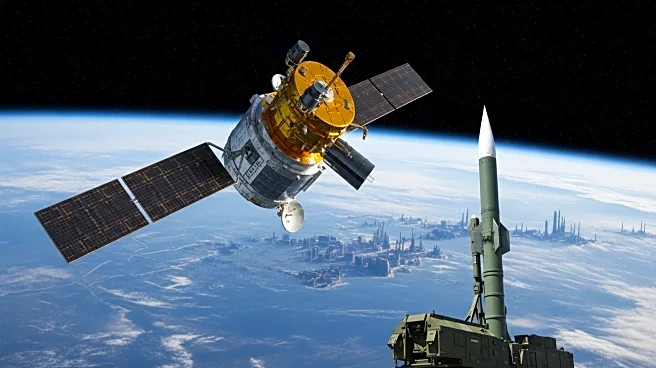What is the story about?
What's Happening?
Russian drones targeted a railway station in Shostka, Ukraine, resulting in the death of one individual and injuries to at least 30 others. The attack, which occurred on Saturday, is part of a broader strategy by Russia to intensify strikes on Ukraine's rail and power networks as winter approaches. Ukrainian President Volodymyr Zelensky condemned the attack, highlighting its impact on civilian infrastructure and the ongoing conflict. The strikes disrupted power supplies in Shostka and surrounding areas, affecting the local population. Additionally, Ukraine reported retaliatory strikes on Russian infrastructure, including a significant oil refinery near St. Petersburg.
Why It's Important?
The escalation of drone strikes by Russia on Ukraine's critical infrastructure underscores the ongoing tensions and the strategic importance of disrupting logistical and energy networks. These attacks aim to weaken Ukraine's military capabilities and civilian resilience, particularly as winter approaches, potentially leading to humanitarian challenges. The strikes also highlight the broader geopolitical conflict, with implications for international energy markets and regional stability. The targeting of infrastructure essential for military and civilian use reflects the complex nature of modern warfare, where civilian and military targets are increasingly intertwined.
What's Next?
As the conflict continues, further strikes on infrastructure are likely, with both sides seeking to gain strategic advantages. The international community may respond with increased diplomatic efforts or sanctions, while humanitarian organizations prepare for potential crises resulting from disrupted services. The ongoing conflict could also influence global energy markets, particularly if key facilities are damaged, affecting supply chains and prices. Monitoring the situation will be crucial for stakeholders involved in regional security and international diplomacy.
Beyond the Headlines
The attacks raise ethical questions about the targeting of civilian infrastructure in conflict zones and the broader implications for international humanitarian law. The use of drones in warfare continues to evolve, presenting challenges for legal frameworks and military strategies. The conflict also highlights the resilience of civilian populations and the role of international aid in mitigating the impact of such attacks. Long-term, the situation may influence global discussions on conflict resolution and the protection of civilian infrastructure in war zones.
AI Generated Content
Do you find this article useful?


